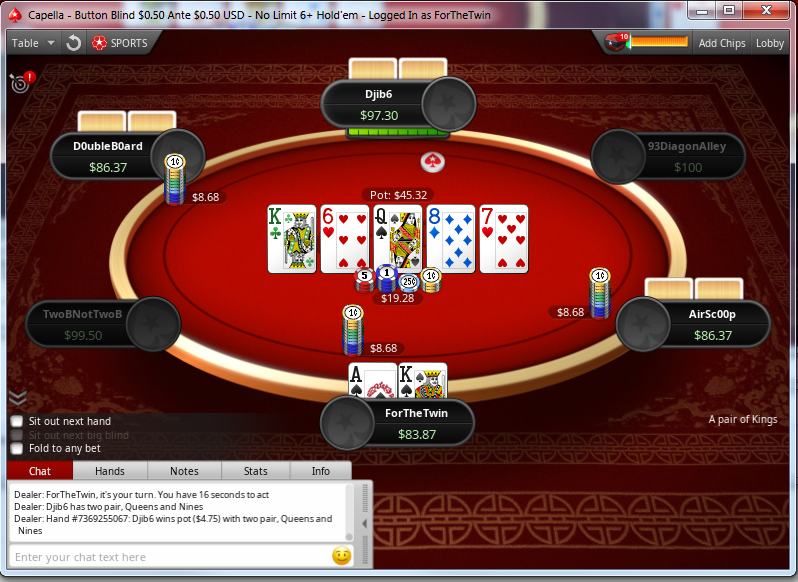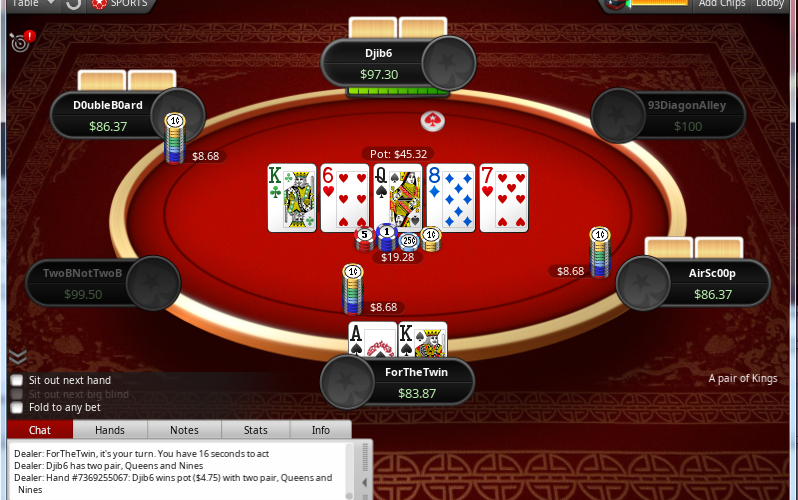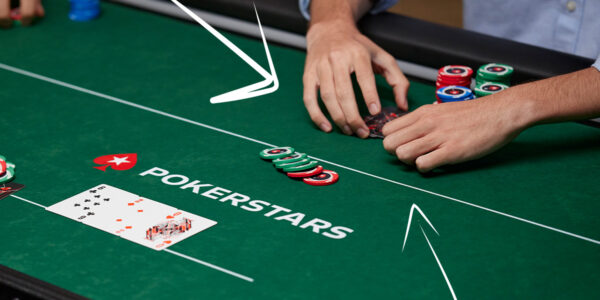Post-Flop Strategy in 6+ Hold’em
6+ Hold’em is a popular ‘short deck’ poker format that plays much like Texas Hold’em, but with a few exciting differences:
- All cards lower than a six are removed from the deck
- Everyone posts an ante and only the button posts a blind – known as the ‘button blind’
- A flush beats a full-house
Available in cash games, exclusively at PokerStars, 6+ Hold’em is your chance to play an action-packed variant loved by high-stakes players around the world.
Having already acquainted ourselves with the differences in rules and pre-flop hand selection between 6+ Hold’em and regular Holdem, it is time to meet some post-flop nuances that make 6+ Hold’em a completely different game post-flop as well as pre-flop.
The Rules of Three and Six
Two ancient nuggets of wisdom from the early days of Holdem are the rules of two and four. These rules provide a short-cut for translating outs into equity. In other words, if there are X cards in the deck that will make your hand, how much equity do you have? In Holdem you have 4X% equity on the flop and 2X% on the turn, assuming that your outs will make you the best hand and that there is no other way of improving to the best hand.
In 6+ Hold’em you have the same number of outs with a straight draw as you do in Holdem. If you have an open-ended straight draw on the flop, then you have eight outs to the best hand. The difference lies in the fact that there are less cards in the deck that are not your outs. Instead of trying to hit your 8 cards from a possible 47 unseen cards, the turn and the river emerge from a deck of just 31 unseen cards. This means that we will fail to hit our straight on the turn and river (23/31) x (22/30) = 54% of the time. Our straight will get there the other 46% of the time. 46 / 8 = 6 and this is how we arrive at the rule of six on the flop. Multiply your outs by six instead of four in 6+ Hold’em.
On the turn, there is one less card to come and the chances of making the straight are now half of what they were on the flop. The rule of three will guide us in this case. With eight outs we can expect to make our hand 8 / 30 = 27% of the time. 8 x 3 is 24 and so the rule of three gives a reasonably accurate approximation of our equity.
These new rules also apply to flush draws but remember that a flush draw has less outs in the first place. Flopping a draw to a flush gives us nine outs in regular Holdem but only five in 6+ Hold’em. On the flop, we have five outs twice from a deck of 31 unknown cards. We will miss the flush (26/31) x (25/30) = 70% of the time, meaning that we will hit it 30% of the time. The rule of six is very accurate here.
The impact of this is that while it is considerably easier to make a straight in 6+ Hold’em, it is somewhat harder to make a flush. Memorize the outs of the two types of draw and then apply the rules of three and six to get a good feel for how often your outs will turn into big hands.


The Dangers of One Pair, Two Pair, and Trips
Two pair, trips and even large overpairs are easy to make and instinctively look very good to the regular Holdem player. However, they are not the powerhouse hands that they appear to be.
Imagine that you open the BU with and is called by two player both blinds call. The flop brings and we bet two thirds of the pot when checked to with our bottom set since we may easily have the best hand and desire some protection (making the opponents fold with reasonable equity). The SB Vilain raises 4x our flop-bet and we are far from happy.
If Villain has something like a flush draw, then we are moderately ahead but dead to one out if he gets there (remember flushes beat full-houses). If Villain has a straight, we are in poor shape, and it is unlikely that too many informed opponents will choose to raise us with a worse hand than at least a bigger set. If Villain is overplaying a set, it is inevitable that his set crushes ours. If we knew that Villain never had a bigger set here, it might become reasonable to mine that full-house provided that stacks were deep enough. This is a fold in most games against most opponents, but that is not to say that too many players will find it. In fact, we can expect a large chunk of the edge we have against our opponents in the early days of 6+ Hold’em to come from them overplaying a hand worse than a straight.
Weak Kickers
While 6+ Hold’em is an action-packed game full of sets getting cracked left, right and centre; there are still some innocuous dry boards on which one pair is not completely worthless. In these situations, however, it is more important than ever to have a solid kicker.
Imagine that we open in the Cut-Off with QsJs and are called by a solid player on the Button. The flop comes and we need to assess our options. There is almost no chance that our kicker is best if Villain holds a queen as there is no sense in entering the pot with a hand as dominatable as QTs or Q9s in this situation. Note that Villain is not getting any discount on his pre-flop call from having posted a blind. Consequently, it is unclear that our hand is able to value bet against much of anything. There is probably, at most, one street of value here against an under-pair and we do not need to go after that value right now.
By checking, we will give Villain an opportunity to bluff with hands that have missed the flop or perhaps made some kind of weak draw like a gutshot. Top pair with a decent kicker is no more than a bluff catcher in 6+ Hold’em and should be played accordingly here when out of position.
Another mistake that we can expect weaker opponents to make in 6+ Hold’em is the over-playing of one pair. This will increase the implied odds of connected cards, suited cards and even pocket pairs more even more than we have already predicted.
Conclusion
We should now feel well enough equipped to sit down and enjoy the thrill of 6+ Hold’em poker. There is much more to learn about this exciting new game, but the best way to do that is through experience. See you at the 6+ Hold’em tables.














